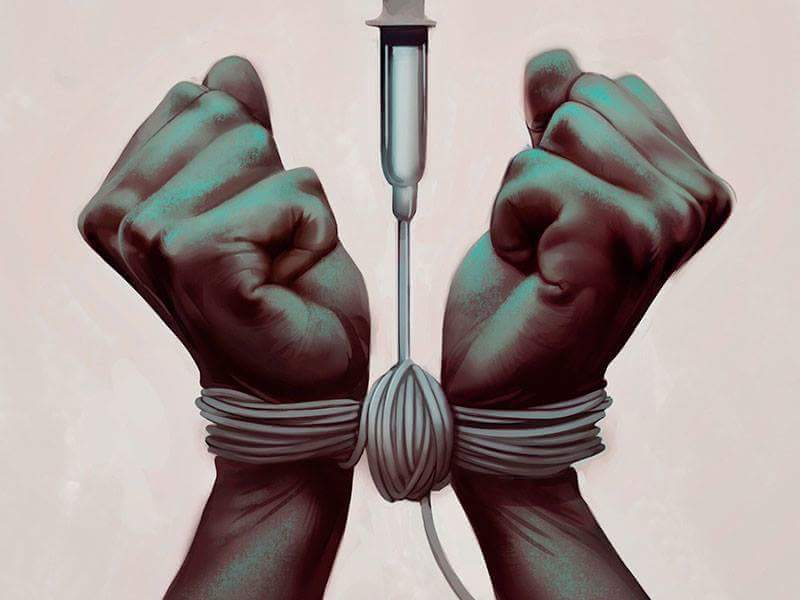The story of british Charles Gardhas recently spread across the whole world. The 11month baby had a genetic disease, which wouldn’t let him speak, see, swallow, breathe on his own, cry and so on. The doctors of Great Ormond Street Hospital said that there’s no chance to save the infant’s life, moreover medications were just complicating the child’s condition. The parents raised money to take the infant to the US, where he would get experimental treatment, but the doctors didn’t react positively: they suggested turning off the life support, so that the child had an easy death. The parents applied to british courts, but after being turned down they applied to the Europian Court, which agreed with the doctors as well. On July 27, 2017 parents decided to agree to swith off the child’s life support.
What is euthanasia? Its types
Almost in all sources euthanasia is defined as “kind death”. Euthanasia is a way of ending the life of people suffering from uncurable or severe illness. There are several types of euthanasia. From medical point of view it can be active and passive. During passive the life support is turned off and the patient dies. The doctor doesn’t do anything for the patient to die, but influences his death in a passive way, for instance he may stop giving the patient medication to make his life longer or switch off the breathing equipments. During active euthanasia doctors intervene into the process of depriving the patient of life. The doctor either injects medicine or influences the death in another way. The usage of these two types of euthanasia can be brightly seen in Jack Kevorkian’s example, who is known by the name of “DoctorDeath”.With the help of the machine he had invented, he would expose people suffering from severe ailments to euthanasia, with their consent of course. American-armenian doctor has assisted the death of about 130 people. In all cases the injection of medicine was done with the help of the patient, so Kevorkian had no intervention into the deaths, thus using passive euthanasia. Only once did the American-armenian doctor use active euthanasia, when the patient was not able to push the button himself, so Kevorkian did it instead of him. As a result he received 10-25 years of imprisonment. There are voluntary and non-voluntary types of euthanasia according to the patient’s consent. The voluntary implies a state where the patient is conscious, is able to express his wish, or is unconscious, but left a note in advance (which must have a legal basis), where the patient states that in case of winding up in a situation, which can not be called “life”, he or she prefers to die. That is to say voluntary euthanasia is applied with preliminary agreement. Non-voluntary euthanasia is the condition, when the patient is unconscious, unable to make a decision himself, in this case a surrogate (friend, relative, wife, husband) decides for the patient.
The use of euthanasia in Armenia
If we rely on the fact that euthanasia helps a suffering person get rid of pains, then it will seem that euthanasia doesn’t have negative sides. But this is not unequivocal, because otherwise everybody would assent to euthanasia. Speaking about the negative sides of euthanasia, it should be mentioned that it will contradict right, putting person’s life in danger. Here it is relevant to mention the 24th article of the Constitution of the Republic of Armenia, according to which everyone shall have the right to life and no one may be arbitrarily deprived of his or her life.This means that euthanasia is partially against the law, because a person is deprived of life and in fact their right to live diminishes.
Examining this norm of the constitution of Armenia, we should pay attention to the fact that this refers to the prohibition of depriving oneself of life arbitrarily. And if we interpret this from the perspective of euthanasia, then in case of voluntary euthanasia, there will be no violation of law. This is because according to judicial practices and different international covenants, the right to live is not absolute and in some cases it may be exposed to restrictions. Unlike countries who legalized euthanasia, in Armenia there is not only no norm legalizing it, but also, on the contrary, in case of using euthanasia a person will incur criminal liability. Particularly, according to the 23rd article of “On Medical Assistance and Service to the Population” law, euthanasia, i.e. acceleration of a patient’s death upon his or her request, through any action and means, shall be prohibited in the Republic of Armenia. Persons, who consciously induce a patient to euthanasia or carry it out, shall be held liable in the manner prescribed by the legislation of the Republic of Armenia. This means euthanasia is not acceptable according to the law.
In general, the usage and legalization of euthanasia depend on the society, religious views, cultural values, traditions and other aspects. For instance,if the state or dominant religion of a country is Christianity, which bans suicide, and if the country is being guided by this principle, then the use of euthanasia will simply be forbidden. Basically both religious and traditional values impact the society greatly. In order to find out people’s attitude towards euthanasia Armenians conducted social query. The target group of the query were citizens of Armenia between ages of 18-30.
Do you agree with the use of euthanasia on a patient suffering from an incurable disease with their consent?
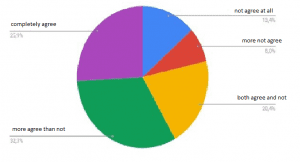
It is seen on the graph, that incurable disease is an important circumstance for those agreeing on euthanasia, that is to say if there is no cure, there is no sense in torturing the patient or prolonging their life with a few days with expensive medicine.
Do you agree with the use of euthanasia on a patient suffering from incurable disease with the consent of another person, a family member or a relative?
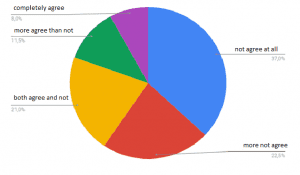
In this case different subjective rights are taken into consideration, including a person’s life and its immunity. The majority of those being asked thinks that another person’s life, including a relative’s life is not in their hands.
Do you agree with the use of euthanasia on a patient suffering from a severe disease with their own consent?
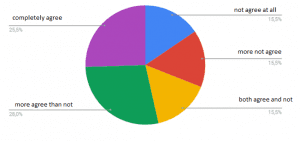
The majority of positive responses is connected with the phrase “ patient’s consent” in the question, meaning that only according to the patient’s wish passive, voluntary euthanasia is used.
Do you agree with the use of euthanasia on a person suffering from a severe disease with the consent of another person, a family member, a relative?
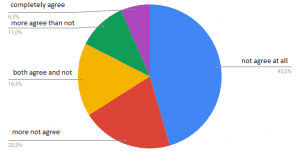
Negative responses prevail to this question. The reason of answering negatively is again connected with the violation of a person’s subjective rights.
To what extent do you agree with the use of euthanasia on a person in coma with the consent of their family member or relatives.?
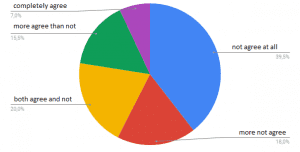
The use of euthanasia on a person in coma is one of the most delicate and controversial questions. First of all we should understand when a person is considered dysfunctional, because only in this case a guardian is appointed for the patient, who signs transactions for the patient, manages their financial means, and other rights prescribed by the law, i. e. dysfunctional are the people who can not realize and manage their actions. To date there is no norm or law about the competence or incompetence of a person in coma, according to which euthanasia with the consent of a relative would be legal. It is never known whether the patient in coma will wake up in two days or a year, or will they wake up at all?
Do you agree with the legalization of euthanasia in Armenia?
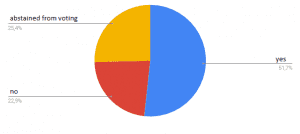
The majority of people voted for, which means that the legislative framework needs some changes connected with the legalization of euthanasia.
Nowadays euthanasia is used in a number of countries. Although euthanasia is not accepted by the majority of the world countries , in some cases it is used and it may even save a person.The chief factor that euthanasia benefits from is the incurable disease the person suffers from. Advocates of euthanasia are guided by this factor, they choose euthanasia as the last and only way out taking into consideration the impossibility to treat the patient.
Insurance companies are the ones that agree on the legalization of euthanasia. In case of any accident, disease or cases alike, expenditures are covered by the insurance company. Reckonings show that a vast percentage of these expenditures are connected with anesthesia of the patient during last days, with prolonging the days, or with relieving the pains and lengthening the life of an incurably ill patient.
This means that the insurance company must provide financial aid for the last days of a patient’s life, when it’s already clear that they are going to die. Hence, insurance companies agree on the use of euthanasia, so as to save money in such situations.
In contrast to insurance companies, medicine production companies are against euthanasia. If euthanasia is legalized, the demand of medications prolonging patient’s life will decline abruptly. Consequently, profits of medicine production companies will reduce considerably.
A few words…
Very often donations are made for patients suffering from incurable disease, as generally their families can not afford anesthetic medications, which don’t even really cure, but prolong what’s inevitable. Instead, this process arises emotional experiences and financial problems. This is the reason of indefinite responses of people having been asked about euthanasia. Understanding the upcoming difficulties, they agree on passive and voluntary euthanasia, but as they are the bearers of traditions, customs and religious values, they are against it, when it comes to the euthanasia with the consent of a relative.
This issue leads to dissensions between Armenian and foreign lawyers. Some of them think that a person has a right to live, and no obligation to suffer, has the right to choose and can manage his/her life. The others oppose to this with the right of life.
However, it should be mentioned that this problem other than juridical has other sides as well.
Questions arise from medical point as well, questions like in case of what disease euthanasia is used, whether the disease is incurable, in what age groups it is accepted to use, do the relatives of the patient get psychological assistance, and so on.
According to Armenian lawyer Armen Kirakosian, the prohibition of euthanasia means protection from medical mistake. “To what extent is our country able to provide the absence of abritrarinesses? This is hard to control and such medical interventiones are not always welcomed by countries. The lawyer clearly explaines the versatility of the phenomenon, that even if used it’s difficult to avoid abritrarinesses.
The legalization of euthanasia will, of course, give rise to many difficulties in Armenia. But if the difficulties are not solved in time, they may arouse large-scale problems.
We think that following the examples of well-developed countries and the responses of the society, there is a need to make the opportunity of the usage of euthanasia in Armenia more steady, legalizing its passive and voluntary types.
In case of the British child the doctors and courts found it senseless to go on with the treatment of the child and suggested euthanasia.
In spite of the fact that euthanasia is legal in their country, it was only used when the parents gave approval. This means that the phenomenon is controllable when it is under control of doctors and law enforcement agencies.
The question of accepting and rejecting euthanasia has fundamental nature. Before discussions are made, the society should be taught some enlightening information, increase their awareness on the nature and types of euthanasia, discuss the problem, and then put it in legislative regulation. As seen in this paper and in the results of the query, the utter prohibition and illegalization of euthanasia in Armenia does not depend on the needs of time and society.
Bibliography
- Էվթանազիա-http://euthanasia.com/06.2017
- ՀՀՍահմանադրություն(հոդված24)
- ՀայաստանիՀանրապետությանօրենքըբնակչությանբժշկականօգնությանևսպասարկմանմասին –http://www.parliament.am/legislation.php?sel=show&ID=1688&lang=arm13.06.2017
Author: Julya Galstyan ÓAll rights are reserved.
Translator: Liana Papyan









